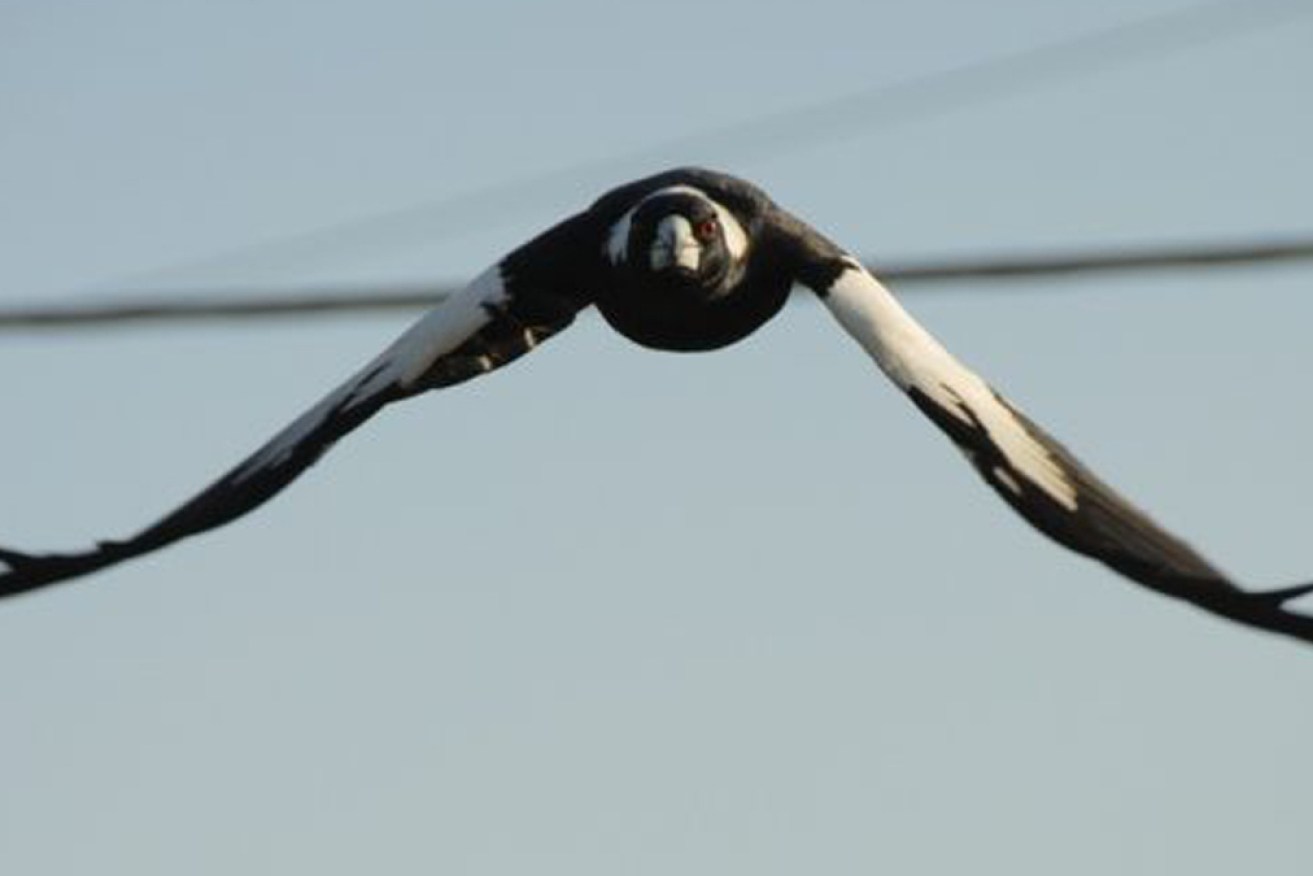The Aussie invaders swooping and bounding beyond our borders


The common magpie is just one Australian species to jump the ditch to New Zealand. Photo: AAP
As Australians begin preparing for the annual scourge that is magpie swooping season, spare a thought for our New Zealand neighbours.
The common magpie is just one Aussie export on a list of fauna that has jumped the ditch to plague our trans-Tasman cousins.
Our magpies were introduced into New Zealand by Acclimatisation Societies between 1864 and 1874 in a bid to control insect pests in crops.
Since then, their numbers have soared.
The birds are known to pursue and attack other species, forcing native birds from their habitats.
They also pose a swooping risk to people. We can relate.

Magpies were introduced into New Zealand in the 1800s.
Other Australian invaders currently laying siege to New Zealand include wallabies, brushtail possums, spur-winged plovers and, until they were recently eradicated, subterranean termites.
The Australian brushtail possum is a serious offender.
Introduced in the 1830s to establish a fur industry, the species is considered a pest because of its destructive effects on native plants and animals.
Considerable effort has been taken to control the possums over large tracts of land, and they are one of the target species in New Zealand’s Predator Free program, with plans to eradicate them from NZ by the year 2050.

The Australian brushtail possum is an invasive species of concern in New Zealand. Photo: AAP
However, of all the Australian species wreaking havoc, the one of most concern to authorities is the wallaby.
Introduced in the late 1800s, mainly for sport and the value of their pelts, but without any natural predators, populations of Dama and Bennett’s wallabies have surged wildly.
A third species, the white-throated or parma wallaby, was thought to be extinct in Australia until the 1960s.
As part of New Zealand’s national wallaby management program, about 100 parma wallabies were exported back to Australia.
The animals hop rampant across several regions on the North and South Islands, destroying native species and productive farmland habitats.
The Ministry for Primary Industries leads a coalition of stakeholders – including farmers, regional councils and land owners – trying to thwart the spread of the wallabies.
John Sanson, manager of Biosecurity New Zealand’s Pest Management Group, told The New Daily that without the national program, it is estimated wallabies will cover one-third of the country within 50 years.
“In 2015, the total gross economic impact of wallabies was estimated at approximately $28 million a year. If allowed to spread unchecked, costs could grow to nearly $84 million a year by 2025 and continue to go up,” Mr Sanson said.
“They compete for feed with sheep, cattle and other livestock, foul pasture, damage crops, young trees, and fences, and can contribute to erosion and poor water quality. It is estimated that three Bennett’s wallabies’ daily feed consumption is equivalent to that of one adult sheep.”

Of all these species wreaking havoc throughout New Zealand, the one of most concern to authorities is the wallaby. Photo: Getty
Wallabies are an adaptable species, able to thrive across a range of vastly different landscapes; case in point, the wallabies of Inchconnachan, Scotland.
A certain Countess of Arran with a penchant for keeping non-native animals, including llamas and alpacas, installed a colony of wallabies on the isolated island of Inchconnachan in Loch Lomond some time after World War II.
The descendants of those marsupials still roam the Scottish isle today, with numbers estimated to be between 50 and 60.

The isolated island of Inchconnachan in Loch Lomond is home to a colony of wallabies. Photo: Getty
Freelance travel writer and Scotland expert Richard Franks visited the island in October and told The New Daily that he had it all to himself … apart from the wallabies.
“I spotted two hopping about in the night, and witnessed a deer swimming across from another island at dawn. A beautiful experience and possibly my favourite moment in all my years traversing Scotland,” he said.
“The Inchconnachan wallabies have adapted surprisingly well to Scotland’s cool climate, with some of them even said to be fond of a dip in the freezing loch.
“Wallabies are actually very good swimmers and have been known to hop around the neighbouring islands on Loch Lomond in the winter months.”
There have been unconfirmed reports of wallaby sightings on the Scottish mainland, with people claiming to have seen them at the roadside near the village of Luss.








